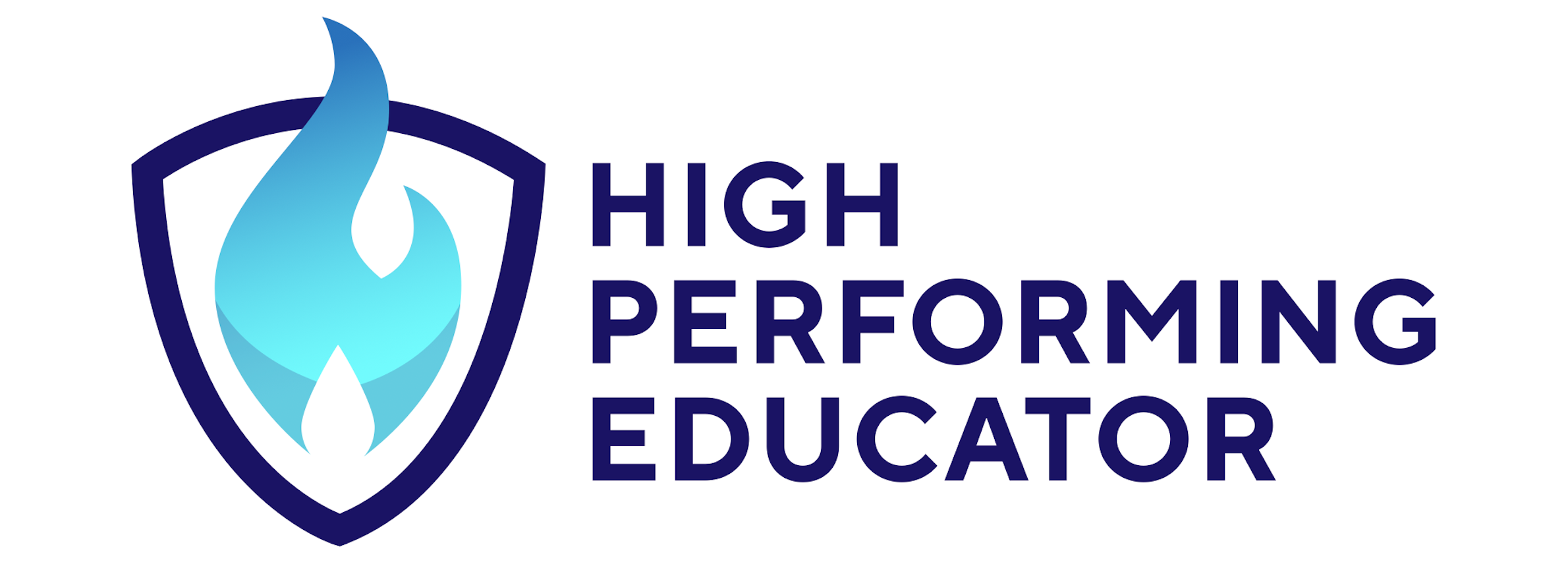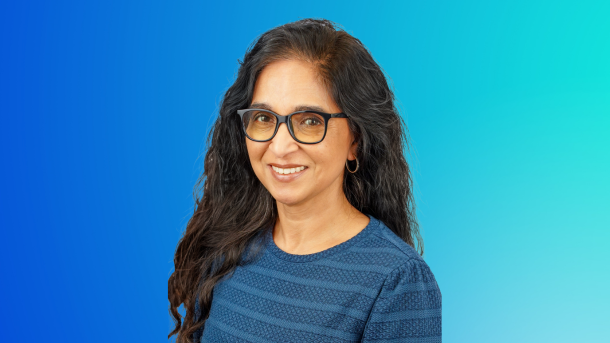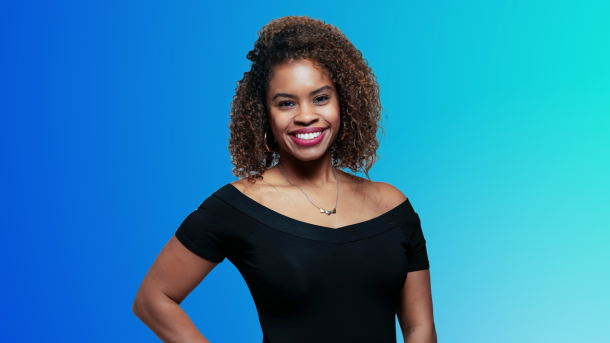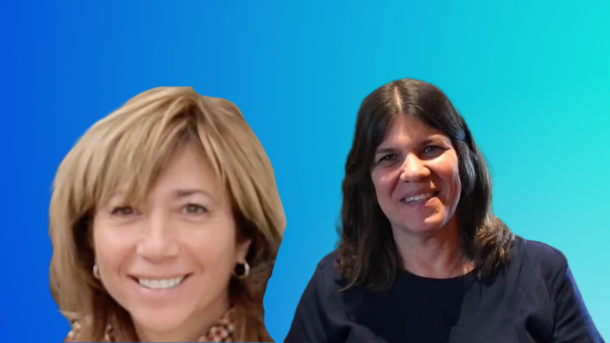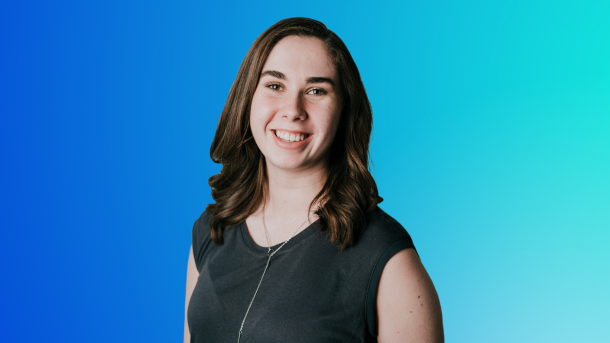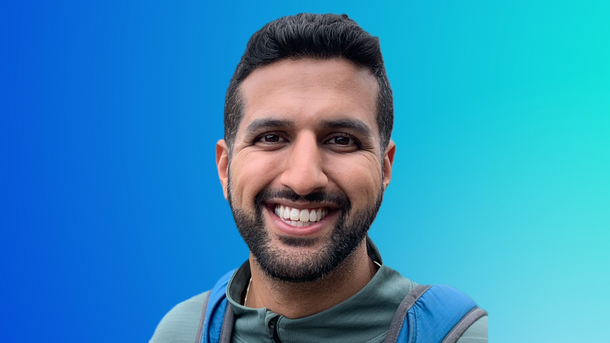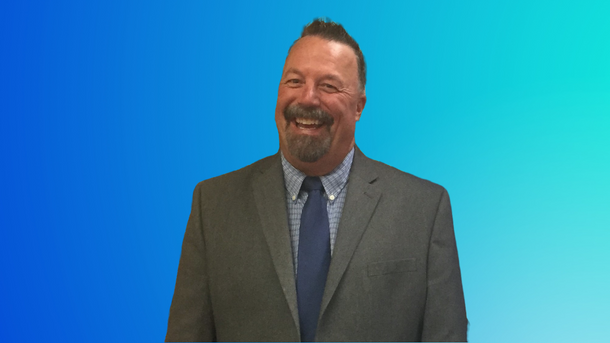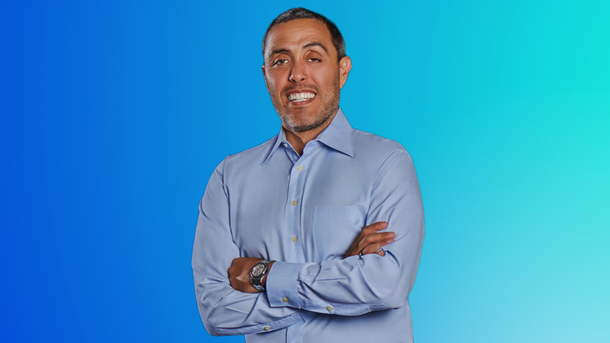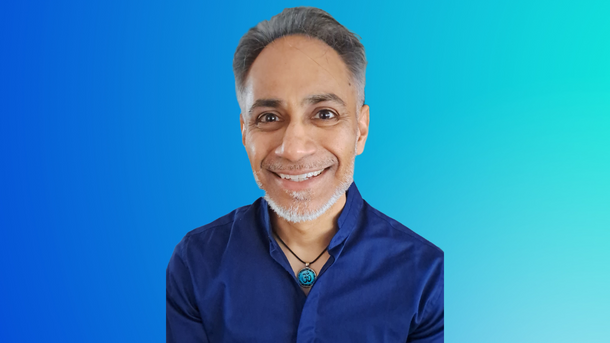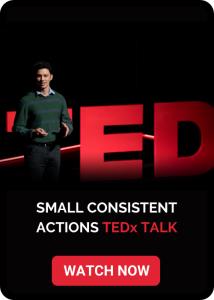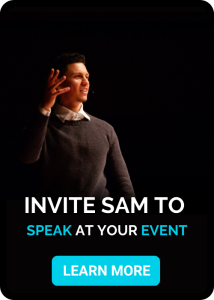About Pratima Burton
Pratima Burton is the K-12 Student Achievement Leader for Equity, Inclusion and Anti-Racism at the District School Board of Niagara. She has been with the DSBN for 26 years and has held a diverse array of roles that underscore her commitment to redefining excellence. Having dedicated 15 years as a secondary school English teacher, Pratima transitioned into pivotal roles such as instructional coach, secondary English consultant, and vice-principal. Her current role in equity is a testament to her dedication to creating safe and inclusive space for students and fostering a genuine sense of belonging for all.
Pratima’s dedication to equity is deeply rooted in her lived experiences, propelling her advocacy for students with diverse backgrounds and identities. While she thoroughly enjoys her current position as an administrator, Pratima fondly reminisces about her 15-year tenure as a classroom educator, where she found immense joy in inspiring student development, fostering learning, and witnessing growth. However, she also realizes the importance of the work the equity team does and the impact on building schools that are safe and inclusive spaces for all students, where their identities are affirmed in the curriculum and throughout the school, and where barriers for success are removed so all can achieve.
Connect with Pratima: Email
Listen Now
Listen to the episode now on Apple Podcasts, Spotify, or on your favourite podcast platform.
Resources Mentioned
District School Board of Niagara (DSBN)
Equity, Inclusion & Anti-Racism at the DSBN
National Council of Canadian Muslims (NCCM)
The Transcript
**Please note that all of our transcriptions come from rev.com and are 80% accurate. We’re grateful for the robots that make this possible and realize that it’s not a perfect process.
Sam Demma
Welcome back to another episode of the High Performing Educator Podcast. This is your host, Sam Demma. And today we have a very special guest, Pratima Burton. Thank you so much for coming on the podcast. Please take a moment to introduce yourself to the listener.
Pratima Burton
Hi, Sam. Thank you for having me here. My name is Pratima Burton. I am a student achievement leader for equity, inclusion, and anti-racism for the District School Board of Niagara. So basically what that means is I’m a System Principal. So I guess what that comes down to is I’m a principal without a school. So I’m kindergarten to grade 12, but I don’t have my own school. So I think that’s probably the hardest thing about that role. I don’t get to engage with kids regularly, but that’s not my daily experience. But it is definitely a joy when I do get to work with kids.
Sam Demma
And the work you’re doing reaches so many young people and impacts all the schools. For someone who’s not familiar with the role, what does the day-to-day look like?
Pratima Burton
The day-to-day is very different every single day. We may have planned meetings where we’re collaborating with educators, with student groups around initiatives that they want to do. We may be working with teachers around resources for their classes. Sometimes we go into schools and work with students who want to start affinity groups. So it could be, you know, something different every single day. Sometimes we’re supporting administrators because something’s gone away that you don’t want it to go, and then we’re there to help with considerations and for teachers. So that’s some of the work. But it’s different every day, and I think we love it that way.
Sam Demma
Sometimes it’s challenging to show up. We are busy, we’re overwhelmed, and the thing that gets us through those difficult moments is our personal reason why. I’m curious, when you think about the work you do in education, why do you show up every single day?
Pratima Burton
Oh, there’s so many ways we can go with this. I’ll tell you a little personal story. When I was in grade eight, it was that time of year where your teacher helps to decide where you’re going to go in grade nine. And back in my day, the options were basic, general, and advanced. And although I was a really, I was a bright student, I worked very hard, I thought I was going to go into academic, or sorry, advanced, as it was called back then. But the teacher recommended me for general. And I don’t know why I never asked. Culturally, my parents wouldn’t have asked because it would have been considered disrespectful, right? I had a friend who advocated for me and said, look, she can go to advanced, and then if she doesn’t do well, she can go down general, but it’s not easy to go up to advance. So although my self-esteem was impacted, I went into advanced and I did very well on a roll all the time, graduated, you know, near the top of the class with everybody, you know, with my peers. But it was something I never, ever forgot. And the interesting thing is that I came into this role four years ago, but this time it was her story. Same thing, very bright student, and at the time when she was going to grade 9, it was academic and applied, and the teacher recommended her for all academic, but except for math, which was ironically her favorite subject. So I just don’t want to see students experiencing things like that. I don’t want students to have the same experiences that are grounded in bias that maybe their families encountered. So I think that’s my motivator. I think that’s why I stay in the role. I just want to see some change. I don’t think change is gonna happen from my generation. I think adults sometimes, some adults are stuck in their ways. They just like things that are, that have always happened the way that they have. And we might not even be able to explain why they happen or why we keep doing some practices. But it’s the kids who are going to use their critical thinking skills and ask why do we do this, why hasn’t this changed. And I just want to support them in giving them the tools and strategies to ask those questions and look at things through an equity lens.
Sam Demma
Amplifying student voice is so important, and you’re a massive champion of doing just that. Can you think of a question a student asked or a recommendation a student brought up that sparked change within a classroom or a school board? There’s probably so many, but is there one in particular that maybe comes to mind when you think about that question?
Pratima Burton
Yeah, I could share with you something that’s very recent. At our school board, one of the learnings that we do for educators is something called an equity cafe. And an equity cafe is an opportunity for educators to come online and have casual conversations with my team about equity topics that are pertinent to their classrooms, to their schools, to their students. And this is where we share considerations and strategies around those topics. And it’s a great opportunity for them to ask questions.
Pratima Burton
Well, we just did our Equity Cafe for Black History Month. And what we did different this time was that we actually had students come and present. So, how did that come about? We have an organization, a community partner named Future Black Female. And I have an individual on my team who is the Black Youth Engagement Coach, and they go around to schools supporting students, starting affinity groups. And one of the common narratives that was coming up was that students felt that in some schools, Black History Month wasn’t being celebrated in a meaningful way. And they wanted to do something about that. So we got together, we did some brainstorming, and these were all your ideas, into a kit, you know, flags, balloons, banners, posters, a QR code that took you to a resource list of, you know, uplifting songs and daily announcements, a book list, videos about history. And the idea was that at the very least, this is what schools should use to celebrate the excellence, the joy, and the achievements of Black history. And, you know, we grappled with the idea of this being just performative, a checkbox item. But then we came to the conclusion that in spaces that maybe there isn’t much happening, this is a start. And we always get asked by educators for numerous topics, like, where do we start? So we’re saying with this Black History Month kit that this is where to start, at the very least.
Pratima Burton
Start here, put out an announcement, say, hey, any students, all students who want to come and be on a Black History Month committee, come, we’ll put our ideas together, we’re going to start with this kit and see where it goes. So back to the Equity Cafe, talk to educators, and it was like a panel and they answered four questions. Why is Black History Month important to you? Why is it important to celebrate Black excellence achievement and joy at school during Black History Month? Why is it important to celebrate Black excellence and joy and to affirm identities, Black identities, all year long? And finally, what do you as students want to see happening in your schools? And the students were absolutely fantastic. They just blew everybody’s minds. It was so impactful for educators. I mean, I can go on and say a lot of stuff, but when you hear it from the voice of students sharing their experiences, it just means so much more. I mean, I really think that sometimes as educators, we have an idea of how students move through our spaces, but it’s so different from the way that they actually move through school spaces. And I just want to elevate those voices so that students could share that. And at the end of that session, we used this Black History Month kit to challenge schools that the next Heritage Month, why don’t you create something like this? Get student voice, take it away, and share what you’re doing.
Sam Demma
There may be an educator listening to this thinking, oh my goodness, this is absolutely amazing. I want to do something similar with my schools. Is the Black History Month package a resource that is publicly accessible or is it just within the school board?
Pratima Burton
Actually, it’s within the school board. We just got together. We just Googled some things. What do we want on this kid? You know, we found a few things, put it together, and printed things, made sure they were accessible, packaged them up, and sent them away. I mean, who knows? Maybe it’s a possible retirement plan. Very huge month, kid. Obviously, that’s probably not the route that I’m going to go, but no, it’s the idea of just asking the students. I don’t think you need to have a pre-packaged kit. Just ask your students, because what students will ask for in one classroom or one school is going to be different than another.
Sam Demma
Fair. It’s so important to give students a seat at the table because it builds responsibility responsibility and ownership. And when they have responsibility over the outcomes and ownership of the ideas, they’re more excited to bring them back to their schools and take action on bringing them to life. The work that you’re doing to amplify student voice is so important. There is also right now in education, many opportunities and with opportunities are challenges. What do you think some of the challenges and opportunities are that exist in education right now?
Pratima Burton
I think one of the challenges are like all the competing priorities, right? There’s so many things that are looking for space, looking for time, and I think sometimes what happens is we focus on, you know, like literacy, numeracy, we have to get kids ready for post-secondary, and of course all of those things are important, but if kids don’t feel safe, they don’t feel they’re included, there isn’t a sense of belonging, then I don’t think they’re going to achieve as well as we want them to. They’re not going to reach their potential. So, I think one of the challenges would be time. And there’s always so much to do. Like for my team, time definitely is a challenge because we’re often asked by people to come collaborate. You look at this resource, can you come create a resource? And there’s five of us on our team. And we try to overcome that challenge with collaboration. I mean, you can’t do this important work dealing with equity, inclusion, anti-racism in a silo. And we try to be very efficient and very effective. You know, we call on our supports. If there are several schools asking for the same kind of resource, then instead of working with the schools individually, we bring them together. We do an equity cafe. We offer a workshop. And as I mentioned, we don’t do the work alone. We have wonderful community partners. We have Niagara College. We have Brock University.
Pratima Burton
I mentioned a local organization, Future Black Female. We do a lot of learning with Facing History and ourselves. And even within our school board, we have the Mental Health and Wellbeing Team, the Safe and Accepting Schools Team, the Indigenous Education Team, Spec Ed Team, Curriculum Teams. We have a wonderful seniors team that supports this work. So when you put all those people together, we’re able to overcome the challenges because we do need to elevate each other’s work, right? And when it comes to challenges and hard questions, I always remember advice that our former director gave us, and I think I heard this from him about 10 years ago, and he said, no matter how hard the challenge or how hard the decision is that you have to make, you’re going to get clarity when you frame it a certain way. And the framing question would be, what’s best for kids? So what can’t you overcome when you come together and you put it that way?
Sam Demma
On the other side of every challenge is also an opportunity. When you think about the opportunities that exist that align with what’s best for kids, like what opportunities come to mind?
Pratima Burton
Well, earlier you mentioned the idea of like the table, right? Coming to the table. So again, when I got into this role, one of the things my team and I tried to do was listen to students and see what they were asking for. And one of the things they asked for was like a student group, like a student council, but not at our schools, like us coming together, like the whole board. And so three years ago, we started the process to launch like a student alliance. And we’re doing it with secondary schools. And as you said, the idea of the table, we didn’t want to create an alliance, a group, something already structured, and then have the students come apply and join it. What we wanted was to build that table and have the students build it so they can sit at their table and to learn alongside with us. And so we started with focus groups. We had about four or five focus groups and we had students, secondary grades nine to 12, lots of representation come and let us know and share with us what they thought this group should look like.
Pratima Burton
They had ideas about who should be in it and what grades and when we would meet and what some of the focus would be and what the process, what the application process would be, how to make it equitable. So now we have this group of like the powerhouse of passionate kids, you know, real advocates who are really dedicated to reshaping and revitalizing their schools and their communities. There’s 50 students. And, you know, we are, as some graduate, we bring on new students, but this is our second full year, and they are really dedicated to creating inclusive spaces. And their vision is to be changemakers who represent and advocate for sovereignty speaking and equity deserving students. And, you know, when you give the students a voice, this is what can happen. And it’s almost like you give them a voice, they’re heard, they are affirmed, and then they come up with the next big idea. So this group then came up with an idea, we now call it the Inclusive Schools Poster, is what we call it. It was an activity that we did last year with the group, and we just basically said, like, let’s do some brainstorming. Let’s come up with what are all the criteria that you think a school needs to have so that it is safe and it is inclusive so everybody has a sense of belonging. And so, you know, 50 students, lots of chart paper, lots of markers, in groups, writing down all these ideas. I think we ended up with like over 300 points. It’s a lot.
Pratima Burton
And we weren’t sure at the time where this was going, but then they started chunking all the ideas into themes. We took all those themes, we narrowed them down to, you know, probably about 75, down to 50, and we ended up with 20 points. And we looked at it and we thought, this is incredible. These are 20 things that are telling us, through student voice, exactly what a school needs to be in order for it to be safe and inclusive, a place of belonging, so that now we can learn and achieve. We have a wonderful communications team who took all those 20 ideas and put them into this beautiful poster. And we did not want it to be decor. So now, it’s this group, the DSBN, and they call themselves DSBN IDEA. So it’s Inclusion, Diversity, and Equity Alliance of Students.
Sam Demma
Nice.
Pratima Burton
They love the acronym. So they are now wanting to create a video. And in the video, they are going to talk about the why, the importance, the process, which I think is very important, and how to use the poster. It’s not decor, it’s a teaching tool. It shares their values and it’s what we should all be aiming for. And some of the things on the posters are like, in an inclusive school, we do better when we know better. We are mindful of our words and their impact. We ensure everyone is safe and belongs. We question, we interrogate, and we take action on injustice. Like, these are student words. They’re not student words that adults recrafted. These are their words. And it’s pretty powerful. We’re hoping to launch the video in March. And we’re just so excited for administrators and teachers and parents, councils and students to see that this is what we believe in.
Sam Demma
What a beautiful testimony to student voice and case study for other school boards to involve their students in creating policy and ideas, guidelines and principles to live by. I am so excited to hear that your school board has put this together, and I hope that other school boards and educators tuning in are writing down these ideas to implement with their students. Did this alliance of the students also come up with the Rise Up Conference? And if so, tell us a little bit about that, that annual event.
Pratima Burton
Yes, it did. It did start from them. That’s why last year was our first one, because they had said, you know, like, can we do a conference? And I think it came up at our first meeting, which would have been in October. And these conferences take like so long to plan. We had 200 students at our first one last year. And although I hadn’t planned anything or my team hadn’t planned anything of that size, we knew it was going to take a long time. So we just got right to it. So the kids were like, let’s do this conference. You know, I’ve heard of conferences where kids come together and they do this learning, there’s presentations and activities, and we’re like, okay, let’s do it. So we started brainstorming ideas. Okay, what are the topics you want to learn about? And that’s where we started. After we got the topics, we started looking for workshop ideas and for presenters. We just put out all of our feelers, the people we know, you know, in the community and throughout the province, but at other boards and just friends and family just to tie in whoever we could to help us. And we offered students lots of opportunities to help us as well. But we were getting the sense that, you know what, they didn’t really want to be involved in the planning. And that’s okay, because you know what they wanted? They wanted something for them. They did not have that before them before. So we wanted to create something that was a celebration for them.
Pratima Burton
And although they did, you know, introduce the speakers and thank them and that kind of thing, we wanted them to come into a space and see that this was created for them, all of their accommodations met, and that they wouldn’t have to ask for anything. So this year, we are hosting it again. It’s our second annual. As you mentioned, the DSPN Student Equity Conference, Rise Up Students Leading the Change. rise up students leading the change. And the intent is to create a space where all students are going to feel valued and respected and supported. We’re going to work together. We’re going to share ideas. The idea is for them to also network with other students, so that when they go back to their own schools and they may have a social justice action plan in mind, the staff leaders that come with them could, you know, help them connect with other schools and work smarter as opposed to harder, right? Especially if they all have, if they have similar initiatives. So just to walk you through what that day looks like, you know, the students arrive this year, we have 240 students. They have a very special keynote speaker to this time, Sam. We’re so happy you’re joining us.
Pratima Burton
We have eight workshops, and we have lots of variety. We have someone talking about loving yourself and never giving them back. We have somebody coming and talking about having special education obstacles and the way that they’ve overcome them. We have Justice for Children and Youth coming because we have some students who are really interested in knowing what their rights are and how to advocate. We have our Indigenous Education team coming and they’re bringing a panel of their students, which is exciting for students to learn from students, especially in their first voices. We have future black female coming and the Canadian National, sorry, the National Council of Canadian Muslims coming to do a session as well. So we have lots of variety for students to choose from. So they get to attend two workshops and lunchtime is always fun. We call it our community mingling. So we have community partners that come and set up tables and offer students information on student-centered resources. And when we did that last year, we didn’t know how it was gonna go because the long table of community partners was what was standing between the kids and their lunch. So we thought the kids were gonna go right for the lunch, but when they saw all this table set up, they were so engaged and did not realize that there was so much available for them in their community. We’re also intentional in making sure that spaces are safe. So we have a youth counselor, social worker. We make sure that we have a multi-faith meditation room available for anybody who needs to take that time. This year, we have a dance group coming. We’re going to be doing a little bit of Bollywood and Afrobeat.
Pratima Burton
And we have somebody doing a mindful art activity. And of course, the food is always a big hit. We have an inclusive buffet. So regardless of your dietary accommodation needs, you can walk up to the table and there is plenty for you to choose from. We want students to know that we created this space for them so they wouldn’t have to ask. And I think one of my most memorable moments last year was just something I had the luck, the honor to overhear. A student said, I wish school could be like this every day.
Sam Demma
It is overwhelming to hear about the beauty of this event. It’s so obvious care, love, and collaboration was fostered in creating it with all the moving parts and pieces, the thoughtful accommodations for everybody to feel welcome and included. Again, I hope other educators are listening, taking some inspiration from this idea to see if they can create similar experiences or spaces in their schools and in their communities. You mentioned it takes a pretty long time to plan something like this. What is the planning process for an event of this size?
Pratima Burton
As soon as the last event was over, we contacted the facility and asked if we could book for this year, right? Because the space was ideal, it’s big, it’s lots of light, and just the movement throughout the day was so easy. They were wonderful in accommodating the spaces we needed and helping us set up. So a year in advance and then we start, you know, putting out our feelers and keeping our ears open for possible topics and speakers. And the first time that we have our meeting again with our group, as we did this year, we ask them, okay, who do you want this year? What do you want to learn more about? And we know that we have some students who are returning, but we’re also going to have new students. So we like to change it, change it up. I think we have almost all of our workshops are new this year.
Sam Demma
Thinking about experiences where students have been impacted by the conference or their experiences at school, can you tell me of a story where you heard of a student situation that was impacted by education or by an event? And if so, you don’t have to share that student’s name if it’s a serious story. But I’m curious, what example comes to mind for you?
Pratima Burton
So one of the first experiences I had in this role, we were asked, my colleague and I, to come to a school to talk to a group of students. They had been experiencing some discrimination and they felt that every time they were sharing what happened to them, they were having to almost justify their feelings. And so, you know, I’m South Asian, my colleague is a hijab wearing Muslim lady, and she’s a wonderful colleague. And we walked into the room where there were a couple of students. And there was, I believe, a South Asian student and a black student, two young ladies, and we walked into the space and we had our meeting, they did their sharing, we intently listened, and at the end of the meeting, one of the girls made the comment that, when you walked in, we knew that it was going to be okay.
Pratima Burton
And I think what she was expressing to us, and what she did go on to elaborate about is that by looking at us she knew that we had some experiences that would have been similar to hers. So all she had to do was just explain. She didn’t have to justify, she didn’t have to rationalize, she just had to say it and knew that we believed her. And that’s why I think representation is so important as well. So that is something that sticks with me.
Sam Demma
I really appreciate you sharing that story. I think it’s so important students can see themselves in their teachers, in their staff, not just the educators in the school building, in their peers, in the role models that are shared in the community. And I appreciate you sharing that story. It’s unfortunate that students even feel like they have to justify, you know, certain situations and stories, but in certain situations, it is the reality. I hope that happens less and less as we move forward as a result of having your poster in every single school, not only in the Niagara Board, but hopefully elsewhere in the future. If there is an educator listening to this podcast who’s felt inspired, motivated, energized, or curious based on our conversation and they wanna reach out to you and ask a question, what would be the best way for them to get in touch with you?
Pratima Burton
Well, that would be by email. It’s pratima.burton@dsbn.org. I’ll spell my name. It’s Pratima.Burton.
Sam Demma
Pratima, I look forward to seeing you in the spring. Keep up the amazing work. You’re doing a great job, and I look forward to connecting again soon.
Pratima Burton
Thank you so much for having me, Sam. And you are doing inspiring work as well, and we are so looking forward to having you join us in April.
Join the Educator Network & Connect with Pratima Burton
The High Performing Educator Podcast was brought to life during the outbreak of COVID-19 to provide you with inspirational stories and practical advice from your colleagues in education. By tuning in, you will hear the stories and ideas of the world’s brightest and most ambitious educators. You can expect interviews with Principals, Teachers, Guidance Counsellors, National Student Association, Directors and anybody that works with youth. You can find and listen to all the episodes for free here.
